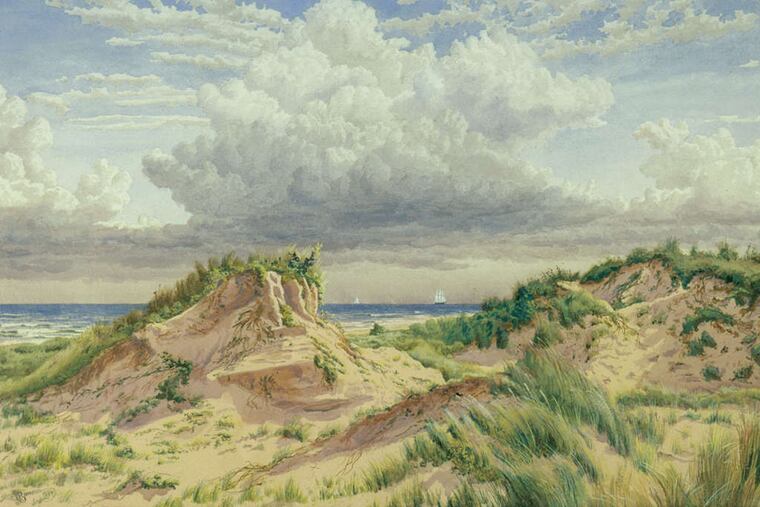For serious studio crafts, look to the galleries
The juried "CraftForms 2011" at Wayne Art Center dazzles with ceramics, wood, fiber, metal . . .

The installation of 21st-century studio crafts in the 17th International Juried Exhibition of Contemporary Craft, "CraftForms 2011," at Wayne Art Center suggests to this observer that there's a paradoxical "homelessness" about the craft art of our century.
In some ways, it's inescapable.
For, amid the routines of daily life, we furnish our homes with craft items of some sort - also our business surroundings, and even our vacation spots - with these handmade or mass-produced craft objects. Even if we don't make a conscious choice of what sort of crafted pieces we keep around us, someone else does it for us.
So where to look reliably for studio crafts? Museums are not a great place to start, as new items of that sort scarcely have had time to settle in there. They are not usually in craft fairs, either. But shaping up more and more as a home base, for serious crafts, are art galleries (Snyderman-Works, for example) and in rare national and international craft-art shows like Wayne's current offering of ceramics, wood, fiber, metal, glass, and mixed media.
The event features 125 works by 109 artists chosen from 894 entries from 33 states, as well as Australia, Canada, and England. The selection was made by Elizabeth Agro, the Philadelphia Museum of Art's Nancy M. McNeil Curator of American Modern and Contemporary Crafts and Decorative Arts.
Twelve artists in the winners' circle are from nine states. Of these, Chuck Sharbaugh of Michigan deservedly won first prize for Across America, a large wooden cabinet that effectively evokes a sense of wanderlust and awe, its rugged exterior on a wooden railroad trestle contrasting with an interior using marquetry to portray quilt-like patterns of highway interchanges.
Catherine Theodore's woven textile called Wind Turbine Mania is like a rallying point. Instead of extending the visible, it turns and confronts it. From Ohio, the entry won second place, while Jeff Dever's celebratory and festive clay-and-steel Serendipity piece from Maryland took third prize.
In fourth place is a strange, small, porcelain mask, Mouth Pieces 25/26, by Wisconsin's Yevgeniya Kaganovich, with Beth Barron of Minnesota taking fifth prize for her inventive, disc-like textile of dense embroidery with found objects. Meanwhile, two of the seven honorable mentions went to Pennsylvanians - Tristyn Albright of York and Michael Brolly of Bethlehem.
As if "CraftForms 2011" in its breadth and often its remarkable depth weren't enough to dazzle visitors, the art center has two other simultaneous exhibits of major interest. One is the superb "Green from the Get Go: International Contemporary Basketmakers," featuring 27 artists, and the "Philagrafika Portfolio" by 59 area printmakers. Absolutely must-see all three.
.
30 paintings at Schwarz
Noteworthy paintings, mid-19th- to mid-20th-century, are among the 30 displayed at that venerable establishment Schwarz Gallery.
Solid offerings from several prominent former Pennsylvania Academy of the Fine Arts painting instructors - Walter Stuempfig in particular, also Francis Speight and Franklin Watkins.
A satisfying group of works by Chester County's Charles L. Fussell gives nothing less than a character-reading of his artistic achievements.
A close-range look at life's little moments occurs in Milne Ramsey's unusual-for-him At the Naturalist's (1876), and a French artist's study for a larger altar boy painting now in the Musee d'Orsay in Paris.
Peter Cameron impresses as an 1894 reportorial observer of Absecon Island, N.J. So does the easy, natural style of duck painter Abbott Graves and the vivid palette of Ben Ferris Gilman.
Perhaps the dandiest surprise, though, is George Washington's serene, confident portrait, not by Gilbert Stuart as previously believed, but by his younger daughter, Jane. Painted about 1850, it's considered one of her best works - similar to another she did, now at Harvard's Kennedy School of Government.
The color of genius
For the area painter Tom Brady, color is madness this side of genius. His solo, "Life Colored In" at Dalet, features everyday scenes and people he knows painted in very bright colors - his heavy brushstrokes with much thrashing about producing a thick oil-paint buildup. Such unusually exhilarating color celebrates the nature of paint and gesture to such an extent that it pushes representation over into the borders of abstraction. Interestingly, Brady does all his on-site work in pastel, translating those images into oil paint later in his studio. Thus, he sets off his fast-lane painterly fireworks there only. Wanted: an all-pastel Brady show.
Small rectangles call the tune in area artist Dolores Poacelli's abstract-painting show, "Color on the Edge," at Dalet. Those small rectangles, not quite released from their geometry, predominate because Poacelli creates space here almost entirely by means of such flat planes. They're often shown to advantage as cascades that include patches of recycled aluminum suggesting "light petals." Color does have a modest but key function in these paintings structured from patterning and rhythmic, expressive planes - making clear to us how personal are the impersonal techniques of Poacelli's art.